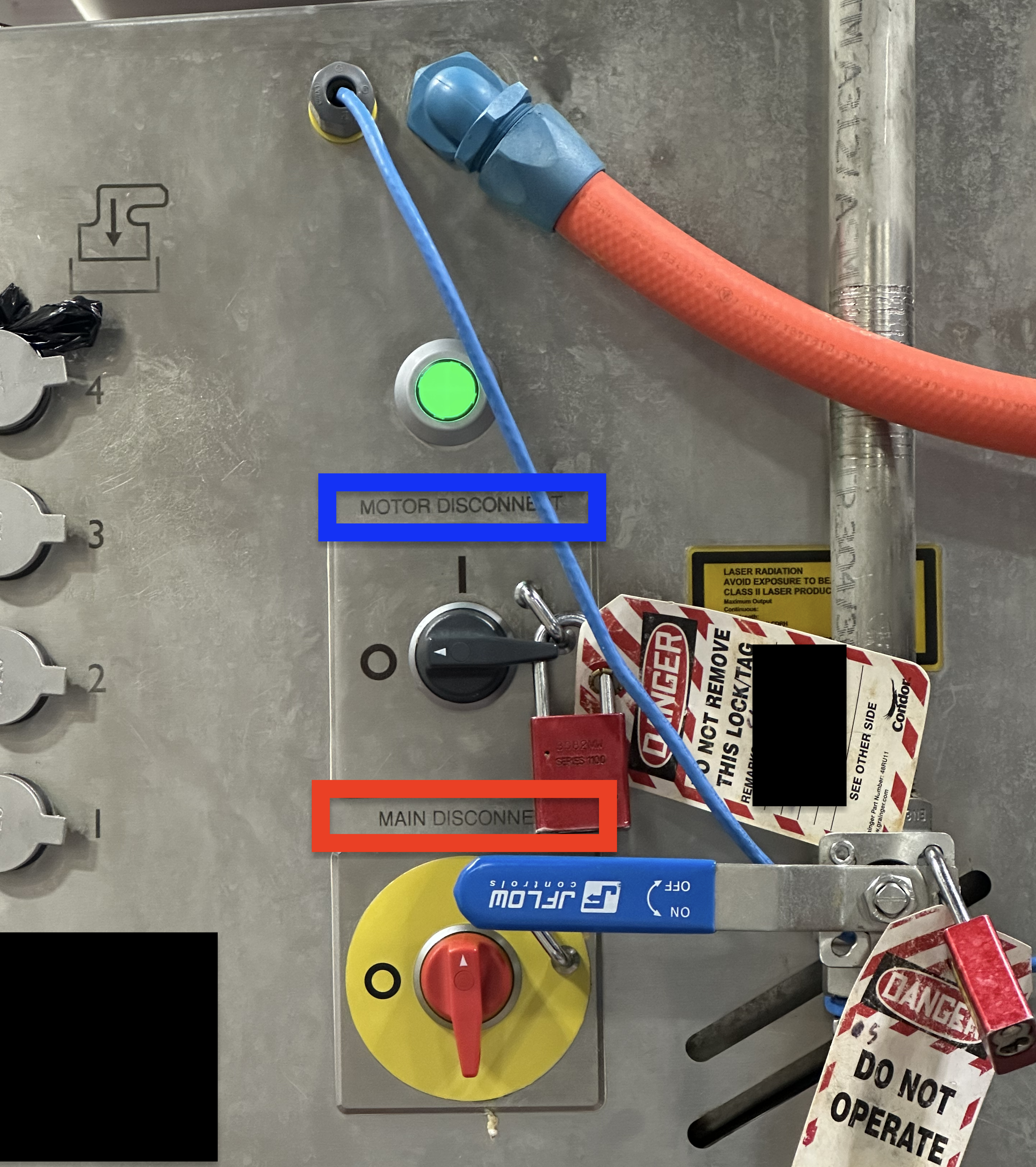Lockout Tagout
Under most circumstances, where servicing or maintenance is to be conducted during only one shift by a small number of persons, the installation of each individual's LOTO device on each energy isolation device would not be a burdensome procedure. However, when complex equipment is being serviced or maintained, when there are many sources of energy, and/or when servicing/maintenance work extends over more than one work shift, OSHA permits employers to utilize an alternative procedure to each employee locking or tagging out each energy-isolating device. Consideration must be given to the procedure's organizational structure in order to ensure the safety and control of EACH of the employees involved. For example... Membership Content
There is an evil myth regarding LOTO training and Periodic Inspections. I recently had a lengthy discussion with a Labor Lawyer regarding the FACT that annual LOTO training does NOT satisfy the Annual Periodic Inspection requirements. An employer is NOT required to perform annual training on LOTO, but they are REQUIRED to conduct a periodic inspection on EACH authorized employee. And far too many do not believe this to be the case. Their arguments are... "I have never heard of such a thing," "This is the way we have always done it," or my favorite... "OSHA was here last year, and they never said anything" (OSHA was there for a non-LOTO complaint!). So here are the 1910.147 specifics stating Periodic Inspections are required ANNUALLY on EACH authorized employee, that training is NOT required annually, and that training does not replace periodic inspections.
Have you ever seen a setup on a machine, typically those manufactured outside of the USA, with two (2) electrical disconnects? Most of the time, these disconnects are COLOR-CODED to clearly identify their different uses, although we have seen some that were NOT color-coded, nor were they properly labeled! Here is an example of what this may look like; I have highlighted both switches with blue and red boxes...
You may notice that they used the motor disconnect device in this example, and you can also notice that the green "power on" light above it is still illuminated. As I spoke about in an earlier article this morning, the use of this device may be acceptable based on the SCOPE OF WORK being performed under this LO. But it is CRITICAL that the facility FULLY understand the use of this "motor disconnect" and the difference from using the "Main Disconnect," as well as which SCOPES OF WORK can be performed under each disconnecting means. We will not find much help from OSHA on this type of setup, so I turn to one of my favorite RAGAGEPs, NFPA 79: Electrical Standard for Industrial Machinery, specifically Chapter 5 - Incoming Supply Circuit Conductor Terminations and Devices for Disconnecting and Removing Power. (emphasis by me)
Last month, I discussed what a "management system" would look like should we manage our Permit-Required Confined Space entry operations as a "management system" versus a standalone OSHA compliance program. (CLICK HERE for that post) Today, I want to discuss the same approach but in respect to how we manage another life safety critical practice... The Control of Hazardous Energy is better known as Lockout/Tagout (LOTO). As of this writing, I have written about LOTO 187 times, most of which are on the technical side of developing, implementing, managing, and auditing LOTO programs and procedures. In this article, I want to take a 35,000-foot view of how a an Energy Control Program should be managed by those closest to the action. So here is the outline of what I will be discussing: 1) Written Program 2) Machine/Equipment specific energy control procedures 3) Training 4) Periodic Inspections 5) Auditing And, of course, I will again use the PLAN→DO→CHECK→ACT model to wrap our heads around this topic.
On August 23, 2023, an employee was troubleshooting an unscrambler machine malfunction. The employee walked around to the bottom of the support frame of the machine, near two parallel drive chains. A coworker restarted the machine, and the employee was pulled into the machine by the drive chains. The employee was killed. Source: https://www.osha.gov/ords/imis/establishment.inspection_detail?id=1693870.015
In this Letter of Interpretation (LOI), OSHA answers several common questions related to the practice of Group Lockout, such as:
Simple and easy answers are:
Here is OSHA's explanations: (Note I have added some text inside [ ] to clarify this Scenario: A group lockbox is positioned in an area remote from the main electrical energy isolation device. The energy isolation device is located in the motor control center. An authorized employee isolates and locks out the main energy isolation device in the motor control center. That employee places the key to [lock placed on] the de-energized isolation device inside a group lockbox and places their lock and tag on the group lockbox and retains the key [to their personal LO lock]. Other authorized employees, who are also part of the work, place their locks and tags on the lockbox and retain their [personal LO lock] keys.
NOTE: some emphasis is by me and some links have been added for ease of access to referenced documents/sources |
Partner Organizations I am proud to announce that The Chlorine Institute and SAFTENG have extended our"Partners in Safety" agreement for another year (2024) CI Members, send me an e-mail to request your FREE SAFTENG membership
Member Associations
|














